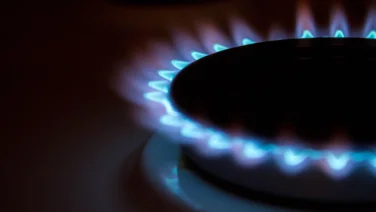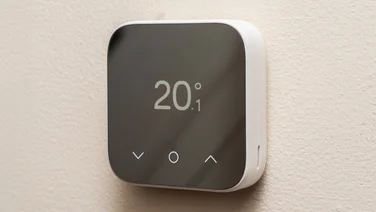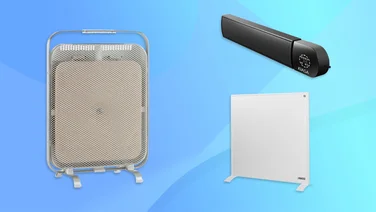To help us provide you with free impartial advice, we may earn a commission if you buy through links on our site. Learn more

Solar panels generate free, renewable energy by converting the sun’s light into electricity. But that’s not the end of the story. To turn that electricity to the type of electricity you can use in your home, your panels need a solar inverter.
A solar inverter, or photovoltaic (PV) inverter, converts direct current (DC) electricity, which your panels capture from sunlight, into alternating current (AC) electricity. AC is the kind you can safely use to power your home appliances.
Every solar PV system needs an inverter, it’s not an optional extra. In 2023 a basic central solar inverter costs around £500 to £1,000 and has a life expectancy of around 10 to 15 years. Other types of inverter such as microinverters and power optimisers are more expensive, but they have a much longer life expectancy – and they can make your entire solar PV system more efficient.
To find the best prices for your ideal solar panel system and inverter, enter a few details into our free quote-finder tool below. For more on solar inverters and how to choose the best type for you, read on.
READ NEXT: How do solar panels work?
Get a free solar panel quote today
Take our quick and easy survey below to be provided with a free, no-obligation quote and find out how much solar panel installation could cost you.
What is a solar inverter?
What does the solar inverter do?
In a solar PV system, a solar inverter (or solar panel inverter) is the gateway from your solar panels to your home’s power network. Any electricity generated by your solar panels must pass through the inverter before it’s safe to use for powering your devices and appliances.Most solar inverters are centralised devices that link to all your panels. These central inverters are installed indoors, usually in the loft.
The best central inverters come with tracking features that let you monitor how much electricity your panels are producing, check their health and status, and spot any faults in the system. You won’t have to clamber up into the loft to check this tracking data, mercifully – you can do it all via an app.
What are the different types of solar inverter?
There are two main types of inverter: a single central inverter, and a system of individual microinverters. You can also upgrade either type of inverter with a system of ‘power optimisers’, which is a kind of cross between central inverters and microinverters.
Before we blind you with any more jargon, here’s a quick guide to these device types and their pros and cons…
1. Central inverter, aka string inverter
This is the type of inverter you’ll find in most residential solar PV systems. As its name suggests, it’s connected to all your panels and works as a centralised electricity converter for the whole system. Each panel sends its captured DC electricity to the inverter, which then converts it to AC electricity for using in your home.
A central inverter also works as a centralised ‘maximum power point tracker’ (MPPT). This means it optimises the output from the PV system as a whole.
Advantages of central inverters: Central inverters are the most affordable kind of inverter, usually costing up between £500 and £1,000. You only need one of them, even if you’ve got up to about 14 panels, so it’s easy to access and maintain.
Disadvantages of central inverters: A networked system with a single MPPT is only as strong as its weakest point. It’s a bit like those Christmas lights that all blow when a single bulb fails. One panel doesn’t even have to break for the whole system to suffer: if one panel is dirty, covered with leaves or simply past its best, then it’ll reduce the output of the entire system.
Also be aware that a central inverter will probably need replacing after 10 to 15 years. In other words, its probable lifespan is less than half that of the panels themselves.

2. Microinverter
A microinverter is a small inverter installed on an individual solar panel. Each microinverter converts DC to AC by itself, so panels with integrated microinverters are sometimes called ‘AC solar panels’. There’s also an individual MPPT tracker on each microinverter.
Advantages of microinverters: Each individual panel works to its maximum potential, no matter how well or badly the other panels are performing. This has been calculated to boost the output of the entire system by 5%-25%. Even if one panel fails completely, the rest of the array can carry on working regardless.
Safety is another plus point with microinverters. Each inverter produces AC current independently, so you never have DC current travelling across your roof. That doesn’t mean a central inverter system is inherently dangerous, but it does mean you’ll need to be extra sure it’s installed properly.
Microinverters have a longer lifespan than central string inverters. They tend to come with 15-25-year warranties rather than 5-10 years.
Disadvantages of microinverters: A system of microinverters costs more than a system with a central inverter; usually around 20-30% more. However we think this extra cost is outweighed by its extra lifespan and potentially improved output.
Maintenance and monitoring can be more tricky, because each inverter is separate, and they’re usually located on your roof behind each panel.
3. Power optimiser
A solar panel power optimiser is a small device that goes on an individual panel to give it its own MPPT. This means each panel produces its optimum output, regardless of what the other panels are doing.
A power optimiser doesn’t convert electricity from DC to AC, though, so it’s not an inverter in the true sense – you still need a central inverter to do that job.
Advantages of power optimisers: Power optimisers are easy to retrofit to existing PV systems that already have central inverters. This upgrades the whole system by ensuring that each and every panel works at their best, boosting overall output by up to 25%. This upgrade also allows you to monitor each panel’s individual performance.
Disadvantages of power optimisers: Power optimisers won’t extend the lifespan of your central inverter, or make it work better. All they do is ensure you get the maximum output from each solar panel. They add to the overall cost of your PV system, but not a huge amount: expect to pay around £40 per optimiser, including installation.
We’ll have more on costs in a moment.
READ NEXT: How efficient are solar panels?
Can I use a solar storage battery with microinverters?
Solar storage batteries store DC electricity. If you have a solar battery and a central inverter, the battery stores DC electricity direct from your roof panels rather than AC electricity from the inverter.
So what happens when you have microinverters, which convert DC to AC before sending it down from your roof? An extra conversion step is necessary, by another type of inverter. An ‘AC battery inverter’ converts the AC current back into DC for storing in the battery. This technique is called ‘AC coupling’.
Many new solar batteries come ready AC-coupled, so they work with microinverters without the need for a separate AC battery inverter. AC-coupled batteries include the Tesla Powerwall 2 (which costs around £10,000) and the Enphase AC Battery (around £1,500).
All solar batteries contain their own small inverter (the ‘battery inverter’), which converts stored DC into AC for using in your home.
READ NEXT: Best solar storage battery UK
How much do solar inverters cost?
Here’s a rough guide to inverter costs…
- Central string inverter: £500-£1,000
- Microinverters: £100-150 per unit
- Power optimisers: £40 per unit (plus a central inverter)
But the price you pay is for the whole system. With central inverters you only need one inverter per system, whereas with microinverters and power optimisers you need several. Here’s the cost breakdown for a typical 3.5kW solar PV system made up of 10 3.5W panels:
- Central string inverter: £500-£1,000
- Microinverters: £1,000-£1,5000
- Power optimisers: £400 + up to £1,000 for the central inverter
The cost of your inverter or inverters, plus all their installation and setup costs, will be included in the quote you receive when you have solar panels installed for the first time.
To find out what type of solar inverter and solar PV system would be the best fit for your home, at the best possible price, enter a few details into our tool up the page. Well ask a select number of reputable local installers to get in touch with a free, no-obligation quote.






